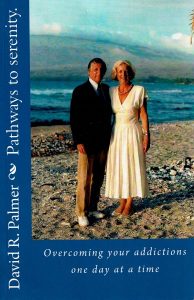
An attractive well-dressed woman walks into Starbucks, orders a Latte, removes her Armani sunglasses and takes a seat. Several patrons look up from their laptops or newspapers casually speculating about who she might be and why she is there.
Maybe she’s a professional woman on the way to a client meeting or a Junior Leaguer out for some shopping or a soccer mom on a coffee break. Or, on the other hand, maybe she’s a prescription drug addict.
Bingo! Actually, she’s a recovering drug addict. Jennifer (not her real name) is also a mother of two, a sales executive and recently divorced.
Her mission on this day in early November is to meet with someone who will help tell her story to other women addicted to prescription pain pills — “desperate housewives” she calls them with a smile — about her experience kicking vicodin, a trade name for the opioid, hydrocodone.
Sometimes viewed as a “white collar addiction,” Hydrocodone addiction has increased among all ethnic and economic groups, but some data suggests that the most likely hydrocodone abuser is a white female between twenty and forty years old.
Hooked on vicodin
Jennifer had been taking a dozen or more vicodin pills a day for five years, and finally, at the end of her rope, she sought help at the University of Arkansas for Medical Sciences (UAMS) which has been researching addiction problems and treating patients for close to 15 years.
A few days prior to the Starbucks meeting she had completed a painful 48-hour detoxing process to rid herself of the vicodin.
After that, as part of the UAMS program, she began taking the drug suboxone (also known as buprenorphine) which replaces the Vicodin and has many of its properties but is less addictive.
Within a period of several weeks she began cutting back on the suboxone, which is easier to kick, until she was totally drug free. The clinic also provided counseling services and encouraged attendance at 12 step meetings, like Narcotics Anonymous, during the process.
Meet Kathryn
Like Jennifer, Kathryn is an attractive, divorced woman in business —she had a well paying position in a legal firm — and had successfully overcome her 12-to-15-pill-a-day habit.
Her message to pain pill addicted women, like Jennifer, is that they can overcome.
So how did Jennifer and Kathryn find out about the clinic and the Suboxone program? Both, who were equally desperate, credited a miracle when they came across an issue of the One Day at a Time newspaper (which has been replaced with this website) with a UAMS ad promoting “Volunteers for Treatment Research.”
The message was that “UAMS had free confidential treatment research programs to help adults (age 18 yrs and older) get off heroin, oxycontin, and other opiates. Treatment, the ad said, lasted approximately 22 weeks and included buprenorphine and counseling.”
When Kathryn and Jennifer, at different times, reported to the Substance Abuse Treatment Center, which was, at that time, a one-story gray building across from the sprawling UAMS campus on Markham St., they were met by Gwen, a “research subject recruiter.”
Gwen explained the suboxone program which had been approved for each of them.
Suboxone, she said, is a narcotic drug which is legally prescribed. Taken under the tongue, it is slower acting and does not provide the same “rush” as other opioids.
The goal of the suboxone program is the total rehabilitation of the patient including withdrawal from all drugs— suboxone included. When Jennifer and Kathryn went through it, the cost for the 28-day program was about $400.
The use of drugs like suboxone and methadone to treat drug dependency is not accepted as valid by everyone. But Gwen’s’s answer is that this approach falls into the “least harm” category.
Not everyone can sober up in a 12- Step program, she says, and you do what you can to meet people where they are.
Here’s how it’s supposed to work. If you have a heroin addiction, for example, you detox from that and go to methadone, which is a little less potent, then you further step down to suboxen, and finally you become drug free. The process includes counseling.
Cost effective treatment
A few years ago Dr. Warren Bickel, a professor of psychiatry and behavioral sciences, joined the UAMS staff. He had a special interest in examining the behavioral processes that underlie drug dependence and conducted research examining novel cost effective ways to deliver treatment to those suffering from addictions.
One of his projects was “computer-based therapy,” which would give participants help with their recovery wherever they are by providing facts and words of encouragement about recovery on line.
Bickel reminded skeptics that “we have more needs than we have therapists, and we have to leverage counseling time.”
Computers, he added, “also have the virtue of being infinitely patient,” a significant benefit when treating someone in deep denial. The computer doesn’t give up.
Another subject that interested Bickel was that “drug dependent people don’t think much about the future. Studies show that heroin addicts think ahead an average of 9 days, he said, while the time horizon for the general population is four and a half to seven years hence.
“If you are only thinking a day ahead,” Bickel says, “it allows you to make choices that completely ignore the consequences of some of your decisions.”
Studies of the brain, Bickel says, also show that the cerebral cortex, which provides the capacity to plan and think abstractly among other things, “goes offline with addicts, and they go back to the more primitive part of the brain dealing mostly with emotions—the limbic.”
These findings confirm, no doubt, what the average citizen believes about the behavior of alcoholics and other drug users. It also suggests that getting the cortex back on line and toning down the limbic are worthy goals in substance abuse treatment.
And there’s another thing. Your chances are vastly improved if you take it one day at a time.




Leave a Reply